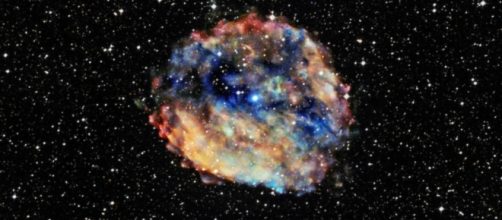Using Chandra X-ray Observatory, astronomers detected a pulsar or rotating neutron star that does not rotate with the normal period as other neutron stars do. This star shows the normal characteristics of a rotating and compacted star, yet, its spin period exceeds the spin that other pulsars ever observed. This pulsar-1E 1613, is located in a supernova remnant known as RCW103, which is at approximately 10,000 light years away from earth in the constellation Norma in the southern celestial hemisphere.
X-ray source
Although this X-ray source has been known to exist at the center of the supernova remnant, its X-ray variation in brightness and its periodicity, which is surpasses six hours has remain a mystery.
Astronomers have not been able to explain the slow periodicity of this star; however, the proposed explanations appoint to a neutron star whose spin is too slow or a typical neutron star that is orbiting a normal star in a binary system of stars.
1E161348-5055
This is believed to be a neutron star 2000 years old and is located at the center of the supernova remnant called RCW103. It´s a periodic pulsar which rotates once every 6.67 hours. It´s periodicity does not correlate with its age, as it should be rotating thousands of times faster. A neutron star spins rapidly just after a nova explosions and it slows down after losing energy; however, this pulsar has not had sufficient time to slow to a period a normal period of 24,000 spins per second.
Theories explaining the slow rotation
While the slow rotation of this star is not clearly understood, astronomers believe that one possible explanation is that the leftover of the explosion which gave birth to this star are falling back unto the star´s magnetic field lines affecting its period of rotation. Another alternative theory is that this star has a low mass binary companion that has an elongated orbit. When the companion star reaches the closest approach to the neutron star, it causes the neutron star to accrue mass form it increasing in brightness and slowing its period of rotation.
Further studies will be conducted using three telescopes, including Chandra X-ray Observatory, Nuclear Spectroscopic Telescope Array (NuSTAR) and NASA´s Swift Telescope.

